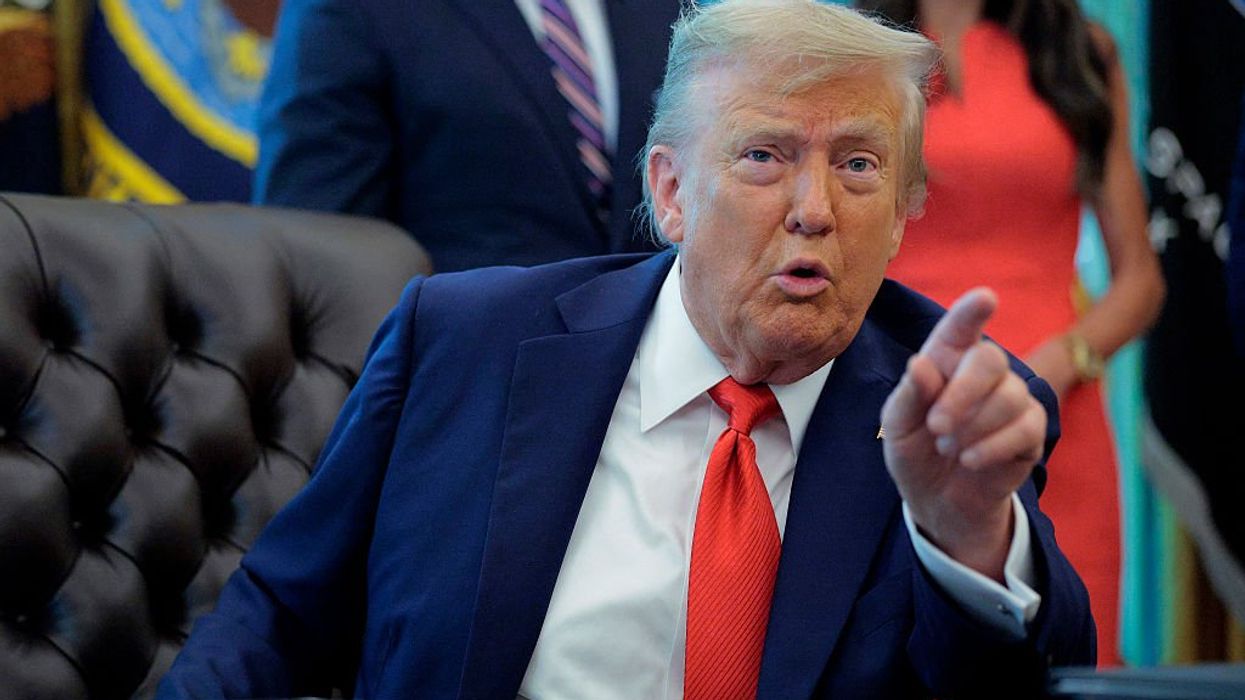The history of taxation in American has a long and infamous history. Since the imposition of the very first tax --- The Navigation Tax of 1651 --- taxes have been wildly unpopular in America. When the Constitution was written and ratified, the only taxes allowed were to pay the debt and provide for the common defense and general welfare. At times, taxation was implemented during wars to fund the government and the war effort, with no intention of becoming permanent. However, since 1913, the United States of America has adhered to a communist plank second only to the abolition of all private property: a progressive or graduated income tax.
What purpose does an income tax serve? In our four-part series on taxes, we'll explore its history in America and how a tax once promised to never climb above seven percent has, at times, ballooned to 77 percent at the hands of an out-of-control government.
Part III: The Reagan Years
During the presidential election of 1976, then president Gerald Ford and candidate Jimmy Carter battled over taxes in a debate. Carter’s class warfare argument resonated with enough Americans to help win the election. Under Carter, taxes remained over 70 percent for the wealthiest Americans while the economy was the worst in peacetime since the Great Depression. Interest rates, unemployment and inflation all skyrocketed under Carter, and Americans endured gas lines and shortages and a general dampening of American morale.
Into this environment came a former actor, former governor of California — Ronald Wilson Reagan.
His middle name “Wilson” was an ode by his parents to Woodrow Wilson. However, he couldn’t have been more different from his namesake. Reagan was a true conservative, socially and fiscally. He received advice from economists like Art Laffer and Milton Friedman. After his election in 1980, Reagan promptly fought for and obtained a massive tax cut in 1981, lowering the top tax rate to 50 percent. It sparked the economy and pulled the United States out of its economic and morale malaise.
In 1985, from the Oval Office, Reagan pitched further tax cuts to his fellow Americans.
In 1981, our critics charged that letting you keep more of your earnings would trigger an inflationary explosion, send interest rates soaring and destroy our economy. Well, we cut your tax rates anyway by nearly 25 percent. And what that helped trigger was falling inflation, falling interest rates and the strongest economic expansion in 30 years. Over the course of this century, our tax system has been modified dozens of times and in hundreds of ways. Yet, most of those changes didn’t improve the system. They made it more like Washington itself: complicated, unfair, cluttered with gobbledegook and loopholes designed for those with the power and influence to hire high-priced legal and tax advisers.
But there’s more to it than that. Some years ago, an historian, I believe, said that every time in the past, when a government began taxing above a certain level of the people’s earnings, trust in government began to erode. He said it would begin with efforts to void paying the full tax. This would become outright cheating and eventually a distrust and contempt of government itself until there would be a breakdown in law and order.
Well, how many times have we heard people brag about clever schemes to avoid paying taxes, or watched luxuries casually written off to be paid by somebody else, that somebody being you? I believe that in both spirit and substance, our tax system has come to be un-American. How would the proposal work?
The present tax system has 14 different brackets of tax rates, ranging from 11 to 50 percent. We would take a giant step toward an ideal system by replacing all of that with a simple three-bracket system, with tax rates of 15, 25, and 35 percent. By lowering everyone’s tax rates all the way up the income scale, each of us will have a greater incentive to climb higher, to excel, to help America grow. The power of these incentives would send one simple, straightforward message to an entire nation: America, go for it.
To young Americans wondering tonight, where will I go? What will I do with my future? I have a suggestion: Why not set out with your friends on the path of adventure and try to start up your own business? Follow in the footsteps of those two college students who launched one of America’s great computer firms from the garage behind their house. You too can help us unlock the doors to a golden future. You too can become leaders in this great new era of progress, the age of the entrepreneur.
Reagan and his policies, derisively referred to as Reaganomics, were mocked by the left. He was called stupid, reckless and senile. However, Reagan succeeded in lowering taxes. In fact, instead of 35 percent for the top rate, he actually lowered it to just 28 percent in 1986 --- the American economy boomed.
Today, many of the same people who reviled Ronald Reagan sing his praises.
Listen to the Full Series on Taxes

 Chip Somodevilla / Staff | Getty Images
Chip Somodevilla / Staff | Getty Images
 ROBYN BECK / Contributor | Getty Images
ROBYN BECK / Contributor | Getty Images Andrew Harnik / Staff | Getty Images
Andrew Harnik / Staff | Getty Images